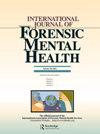Perceived Credibility of Social Media Data as a Collateral Source in Criminal Responsibility Evaluations Using an Experimental Design
IF 0.9
4区 医学
Q3 CRIMINOLOGY & PENOLOGY
International Journal of Forensic Mental Health
Pub Date : 2021-02-08
DOI:10.1080/14999013.2021.1880504
引用次数: 2
Abstract
Abstract Perceived credibility of social media data (i.e., a Twitter post) was compared to more traditional collateral sources in criminal responsibility evaluations using independent samples of laypersons and forensic experts. Overall, results suggested greater skepticism toward social media relative to two other sources, particularly when information suggested a mental illness. Both samples, however, viewed the tweet as potentially useful. Notably, both studies were limited by the use of an experimental design that was intended to capture initial impressions rather than fully mimic standard assessment and courtroom processes. We advocate a cautious but open-minded approach when considering social media data as collateral.使用实验设计的社会媒体数据作为刑事责任评估附带来源的感知可信度
在刑事责任评估中,使用外行和法医专家的独立样本,将社交媒体数据(即Twitter帖子)的感知可信度与更传统的附带来源进行了比较。总的来说,结果表明,相对于其他两种来源,人们对社交媒体的怀疑程度更高,尤其是当信息显示出精神疾病时。然而,这两个样本都认为这条推文可能有用。值得注意的是,这两项研究都受到实验设计的限制,实验设计旨在捕捉初步印象,而不是完全模仿标准评估和法庭程序。在将社交媒体数据作为抵押品时,我们提倡谨慎但开放的态度。
本文章由计算机程序翻译,如有差异,请以英文原文为准。
求助全文
约1分钟内获得全文
求助全文

 求助内容:
求助内容: 应助结果提醒方式:
应助结果提醒方式:


